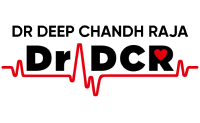EPS stands for Electrophysiology Study. This is a very safe cardiac percutaneous (nonsurgical) procedure, usually done under local anaesthesia, with the patient in awake state. The patient is brought to the catheterisation lab. While the patient is resting comfortably in a lying down position, the doctor will administer local anaesthesia injection in the groin (usually the right groin). After this step, the patient does not feel any pain. 3-4 sheaths are placed in the groin. Through these sheaths the doctor takes catheters into the heart. Under fluoroscopy (x-ray), the doctor places these catheters in strategic locations of the heart. These electrical catheters are capable of sensing electrical signals and also capable of delivering electrical pulses.
The electrical signals of the heart are seen live on a large screen. The team of medical persons will then perform critical manoeuvres to induce tachycardias and match them with patient’s clinical heart rhythm problem. The study also helps in understanding the integrity of the patient’s heart’s electrical system. Sometimes, the heart can race fast due to medicines given by the doctor during the EP study. It is completely normal for the patient to feel palpitations during the procedure, due to the doctor performing some manoeuvres on the heart. The patient can freely tell the doctor if there is any pain in the groin, for which the doctor will give more local anaesthesia. These are short lasting symptoms and the patients usually recover fast after the procedure. The whole procedure lasts for 30 minutes to 1 hour.
After the procedure the patient is shifted for observation for 1 hour. The patient will be asked not to move his/her legs for 4 hours. After this time period the patient can walk normally. The procedure can either be done as day-care or the patient can be discharged the next day. The patients can resume all work from the time of discharge. Consult with your doctor for more detailed discussion before the procedure.
RFA stands for Radiofrequency ablation procedure performed on patients with cardiac heart rhythm problems like palpitations, tachycardias. The steps for the procedure are pretty much the same as a percutaneous (nonsurgical) cardiac EPS procedure. After delineating the source of abnormal heart rhythms, the doctor will deliver RF energy through an ablation catheter. This controlled RF pulse will destroy the abnormal source of the palpitations through heat energy. The patient can feel mild chest pain, or no chest pain at all during the RF ablation procedure. The procedure is performed mostly under local anaesthesia. A few patients, like who might need pulmonary vein isolation for atrial fibrillation ablation, might need a short general anaesthesia for the procedure.
After the procedure the patient is shifted for observation for 1 hour. The patient will be asked not to move his/her legs for 4 hours. After this time period the patient can walk normally. The procedure can either be done as day-care or the patient can be discharged the next day. The patients can resume all work from the time of discharge. Consult with your doctor for more detailed discussion before the procedure.
Cardiac EPS and RFA procedures are basically cardiac electrophysiology studies and radio-frequency ablation done to diagnose and treat heart rhythm problems. These problems in heart rhythm are due to some abnormal sources of electricity from the heart’s muscle or due to short circuits within the heart muscle. There are multiple reasons why one should get these problems. Most of the times, the reason is ‘idiopathic’– meaning no particular reason. Some patients might have accessory pathways (additional muscle fibers) causing these short circuits.
The patients are usually asked to report/ admit on the day of the procedure. They are asked to be on empty stomach for 6 hours before the procedure. Most importantly, the doctor might ask you to stop certain medicines before the procedure. Please consult your doctor and follow the instructions given by him.
RFA offers cure rate varying from 70% to 98% depending on the type of heart rhythm problem. SVT (supraventricular tachycardias) have a very good cure rate of more than 90%. RFA for ‘Atrial fibrillation (AF)’ can have cure rates varying from 70% to 90% depending on the duration of AF. RFA for ventricular tachycardia (VT) and PVCs have cure rates of more than 80%. In expert hands and with use of advanced technologies like 3d electroanatomical mapping and intracardiac echo (ICE), the safety and cure rates can be considerably increased.
Safety is very important for cardiac EPS and RFA procedures. The doctor can hence use some of the technological advancements to perform these procedures absolutely safely without any complications. Still the rate of complications could be around 2% (2 in 100). Most of the complications are minor like groin site swelling, or pain in the groin. Major complications are rare, but can involve pericardial collection (blood collection around heart needing drainage), need for pacemaker, blood transfusions.
The procedure can range from 1 hour to 3 hours, depending on the complexity of the procedure.
Patients can be either discharged the same day or mostly the next day of the procedure. The patients can resume work from the time of discharge.
Most of the patients need not take any medicines after the procedure for palpitations. Depending on the findings during the EP study, the doctor might keep you on some medicines for a variable duration.
The cost of a cardiac electrophysiology study (EPS) can be around 50,000 INR. The cost of conventional EPS RFA procedure can be around 1,00,000 INR. The cost of cardiac EPS performed with aid of 3d electroanatomical mapping can cost around 1,50,000 INR. The cost of RFA is additional 1,00,000 INR or less. Use of additional modalities like intracardiac echo and general anaesthesia, will add to the treatment costs. Your doctor will decide what best can be done to achieve success with safety for your heart’s condition.




